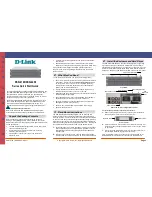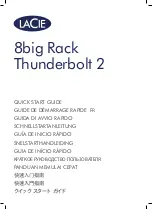
Modular Ethernet Switch User’s Guide
Switch Management Concepts
21
♦
Link Change Event
This trap is sent whenever the link of a port changes from link up to link down
or from link down to link up.
♦
Port Partition
This trap is sent whenever a port is partitioned as a result of more than sixty-
one
collisions on the port (i.e., is automatically partitioned). The number of collisions that triggers this trap
is the same at either 10Mbps or 100Mbps.
♦
Broadcast Storm
This trap is sent whenever the port reaches the broadcast storm rising or falling
threshold.
♦
Power Supply Module Inserted
This trap is sent whenever a redundant power supply module is
installed in the switch.
♦
Power Supply Module Removed
This trap is sent whenever a redundant power supply module is
removed in the switch.
♦
Bad Power
This trap is sent whenever a redundant power supply is receiving AC power but not
supplying DC power to the switch.
♦
Power Supply Module Inserted
This trap is sent whenever a redundant power supply is installed in
the switch.
♦
Power Supply Module Temperature Warning
This trap is sent whenever the temperature of a
redundant power supply module measures over 80
°
C (176
°
F).
♦
Power Supply Module Voltage Warning
This trap is sent whenever a redundant power supply
generates DC current over 3.9 volts.
♦
Power Supply Module Current Warning
This trap is sent whenever a redundant power supply
generates DC current over 60 amps.
♦
System Fan Failure
This trap is sent whenever one of the four system fans in the switch fails.
♦
Power Fan1 Failure
This trap is sent whenever one of the two fans on a redundant power supply
module fails.
♦
Power Fan2 Failure
This trap is sent whenever one of the two fans on a redundant power supply
module fails.
MIBs
Management information and counters are stored in the Switch in the Management Information Base (MIB).
The Switch uses the standard MIB-II Management Information Base module. Consequently, values for MIB
objects can be retrieved from any SNMP-based network manager software. In addition to the standard MIB-
II, the Switch also supports its own proprietary enterprise MIB as an extended Management Information
Base. These MIBs may also be retrieved by specifying the MIB’s Object-Identity (OID) at the network
manager. MIB values can be either read-only or read-write.
Read-only MIBs variables can be either constants that are programmed into the Switch, or variables that
change while the Switch is in operation. Examples of read-only constants are the number of ports and types
of ports. Examples of read-only variables are the statistics counters such as the number of errors that have
occurred, or how many kilobytes of data have been received and forwarded through a port.
Read-write MIBs are variables usually related to user-customized configurations. Examples of these are the
Switch’s IP Address, Spanning Tree Algorithm parameters, and port status.
If you use a third-party vendors’ SNMP software to manage the Switch, a diskette listing the Switch’s
propriety enterprise MIBs can be obtained by request. If your software provides functions to browse or modify
MIBs, you can also get the MIB values and change them (if the MIBs’ attributes permit the write operation).
This process however can be quite involved, since you must know the MIB OIDs and retrieve them one by
one.
















































